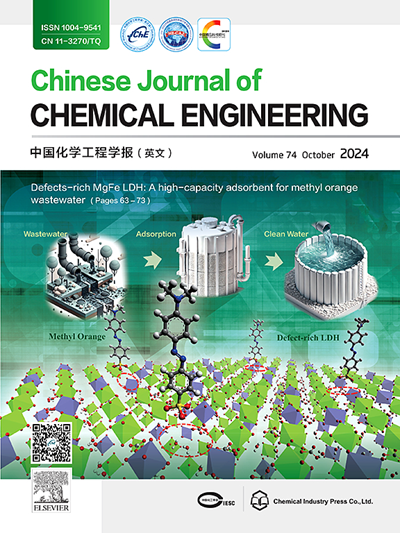横流中螺旋翅片圆柱动载荷特性及尾迹涡结构
IF 3.7
3区 工程技术
Q2 ENGINEERING, CHEMICAL
引用次数: 0
摘要
本文通过实验和数值模拟,研究了四种不同参数的螺旋翅片安装在上游圆柱上,对换热管振动响应和横流涡结构的影响。结果表明,圆柱的振动响应与翅片参数有很强的相关性。结果表明,翅片参数对圆柱的振动响应和尾流结构有显著影响。翅片气缸的引入既影响了其自身的振动幅度和频率,也影响了下游气缸。翅片圆柱体I和III的振幅分别比裸圆柱体降低57.8%和59.9%。这种减小有助于抑制振动并减小下游气缸的振幅。翅片筒II虽然略微降低了自身的振动,但却使下游筒体的振幅增加了13.7%。当翅片圆柱体位于上游时,翅片圆柱体的平均阻力系数和升力系数均方根均高于裸圆柱体。较小的节距和较大的等效直径将导致阻力增加,从而导致尾流中的涡流脱落增强,从而放大了尾流中气缸的振动。翅片筒II下游尾迹最宽,涡强度较高,下游筒体动载荷和振动增大。尾迹中涡强度衰减较快,下游柱体振动较弱。本文章由计算机程序翻译,如有差异,请以英文原文为准。

Dynamic load characteristics and wake vortex structure of spiral finned cylinders in cross-flow
In this study, four types of spiral fins with varying parameters were mounted on an upstream cylinder, and the effects of spiral fins on the vibration response of heat exchange tubes and the vortex structure in cross flow were studied through experiments and numerical simulations. The results indicate a strong dependency of the cylinder's vibration response on the fin parameters. The results indicate that the vibration response and wake structure of the cylinder are significantly influenced by the parameters of the fins. The introduction of a finned cylinder affects both its own vibration amplitude and frequency, as well as the downstream cylinder. The amplitudes of finned cylinders I and III are reduced by 57.8% and 59.9%, respectively, compared to the bare cylinder. This reduction helps to restrain vibration and diminishes the amplitudes of the downstream cylinder. Although finned cylinder II slightly decreases its own vibration, it increases the amplitude of the downstream cylinder by 13.7%. The mean drag coefficient and the root mean square of the lift coefficient of the finned cylinder are higher than those of the bare cylinder when the finned cylinder is positioned upstream. Smaller pitch and larger equivalent diameter will lead to increased drag, resulting in enhanced vortex shedding in the wake, which amplifies the vibrations of the cylinder in that wake. The downstream of finned cylinder II has the widest wake and higher vortex strength, and the dynamic load and vibration of the downstream cylinder are increased. The vortex intensity decays faster in the wake of finned cylinder III, and the vibration of the downstream cylinder is weaker.
求助全文
通过发布文献求助,成功后即可免费获取论文全文。
去求助
来源期刊

Chinese Journal of Chemical Engineering
工程技术-工程:化工
CiteScore
6.60
自引率
5.30%
发文量
4309
审稿时长
31 days
期刊介绍:
The Chinese Journal of Chemical Engineering (Monthly, started in 1982) is the official journal of the Chemical Industry and Engineering Society of China and published by the Chemical Industry Press Co. Ltd. The aim of the journal is to develop the international exchange of scientific and technical information in the field of chemical engineering. It publishes original research papers that cover the major advancements and achievements in chemical engineering in China as well as some articles from overseas contributors.
The topics of journal include chemical engineering, chemical technology, biochemical engineering, energy and environmental engineering and other relevant fields. Papers are published on the basis of their relevance to theoretical research, practical application or potential uses in the industry as Research Papers, Communications, Reviews and Perspectives. Prominent domestic and overseas chemical experts and scholars have been invited to form an International Advisory Board and the Editorial Committee. It enjoys recognition among Chinese academia and industry as a reliable source of information of what is going on in chemical engineering research, both domestic and abroad.
 求助内容:
求助内容: 应助结果提醒方式:
应助结果提醒方式:


